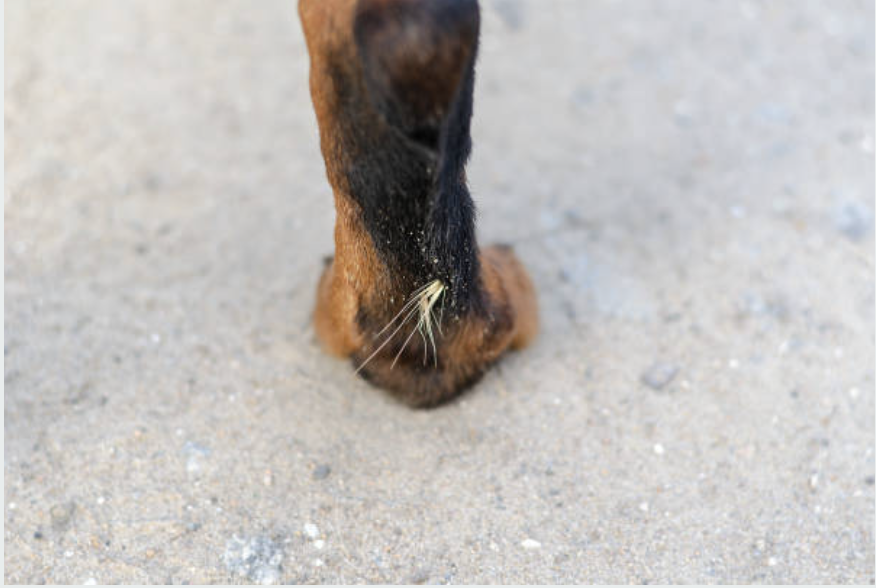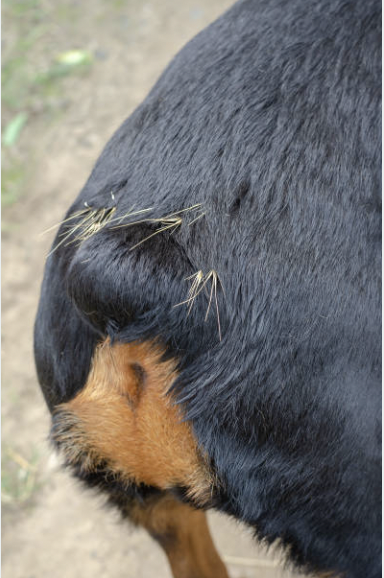Summer is here! Foxtail season has arrived!
by Camille Virtucio, DVM
May 1, 2022

Foxtails are parts of a plant used to disperse seeds for reproduction. Foxtail isn’t really a name of a plant, but it is a part of a plant. In Spring, it looks like a green barbed stalk with spikes, but in Summer, where it becomes dangerous, it turns into a dry brown version that has a main purpose of “attaching” to your clothes and to your pet.
These plant parts are a classic annoyance to dogs, owners and even to veterinarians in California as they are not your typical spikes that get lodged onto the skin. The problem with foxtails is that they travel can through the soft tissues and can lodged onto the internal organs of a dog. Quite difficult to imagine, right? But yes – foxtail can burrow onto a dog’s paw, underbelly, leg, nose and ears, then creep its way in. It will first lead to a pimple looking structure on the skin – sometimes it will pop and cause bleeding and discharge, then the skin closes up as a normal part of a wound healing process. Then a few days or a week later, there seems to be another pimple or abscess on the same leg but a little farther away from the first abscess. This is a classic story of a foxtail.
So what do you need to know during foxtail season?
- Be well informed on how a foxtail look like and avoid bringing your dog to hike trails, parks and fields that have them.
- Always check your dogs’ paws (in between toes and underneath) after a walk. Remove all foxtails you can find and make sure to remove all parts of it.
- Any suspected foxtail that has already caused a pimple or abscess must be brought to a veterinarian as soon as possible.
- Nonstop sneezing, itching of ears or licking of paws must be thoroughly checked by a veterinarian especially when their is suspicion of a foxtail lodgment.

What happens at the vet appointment?
More common cases that I have seen are sneezing dogs, non resolving ear infection and paw abscesses. I have removed foxtails from the ears (which I would say will be the most common in small dogs), mouth, legs, eyelids (yes! Very interesting) and paws for bigger dogs who like hiking. We can remove them quickly without sedation if the pet is cooperative and the foxtail isn’t lodged way in, or we have to sedate and anesthetize for those abscesses that need more exploration.
We drain the abscess, get a sample for culture and give the dog pain, anti-inflammatory and antibiotic medications. When foxtails have travelled way into the body, it will be very difficult for a general practitioner veterinarian to find it. The worst cases need to see a veterinary specialist to find what’s wrong and can result to a surgery for foreign body removal.


